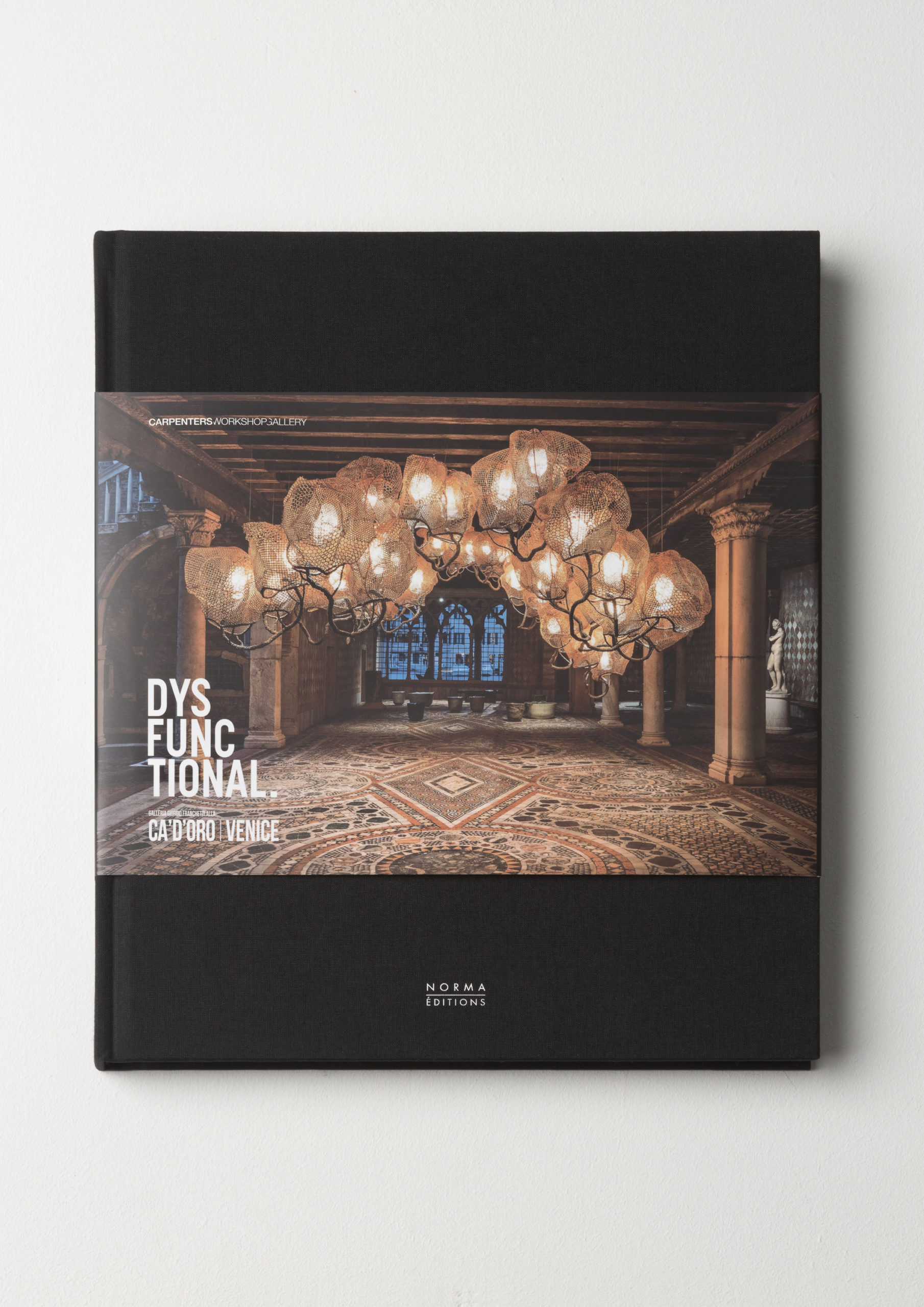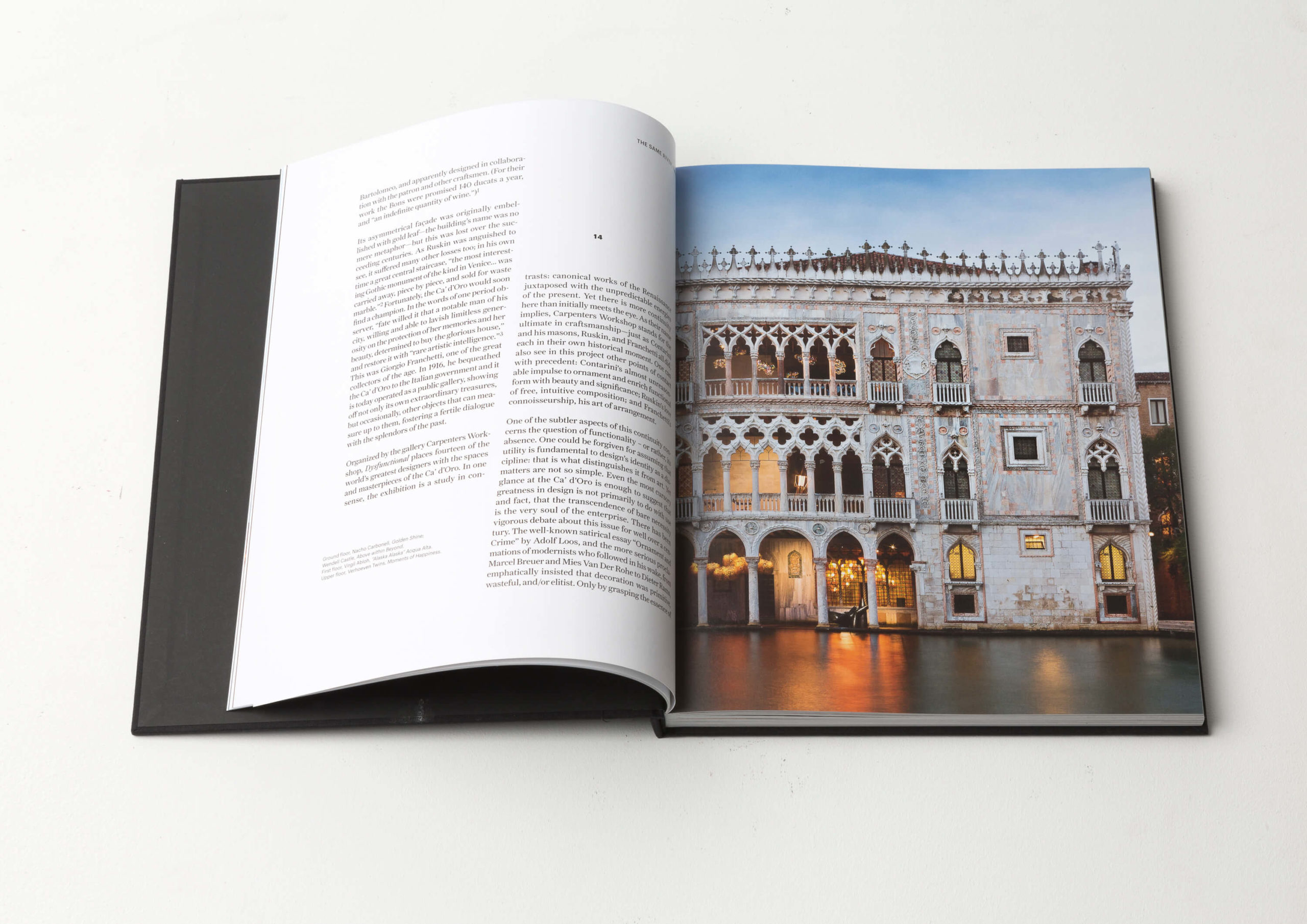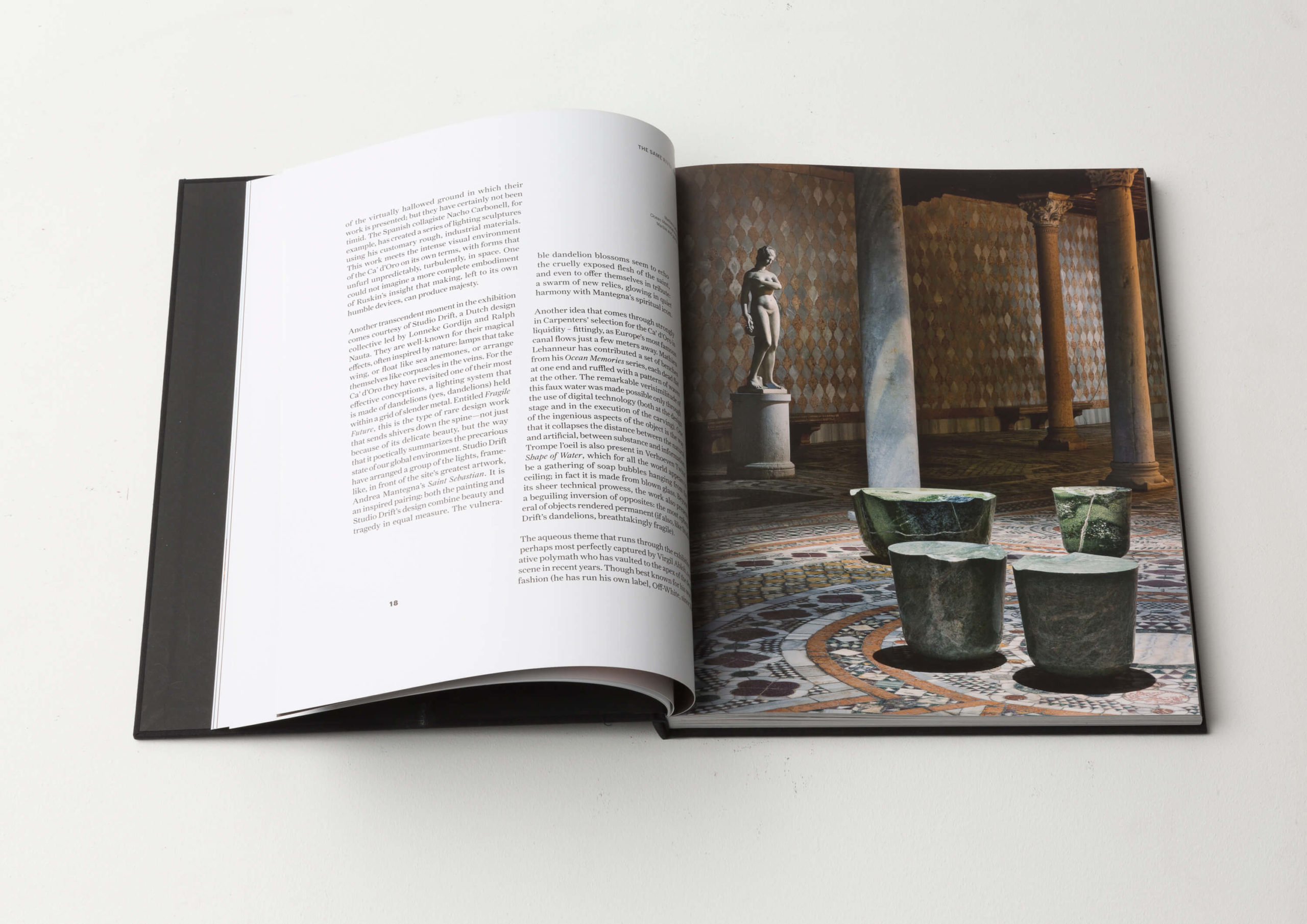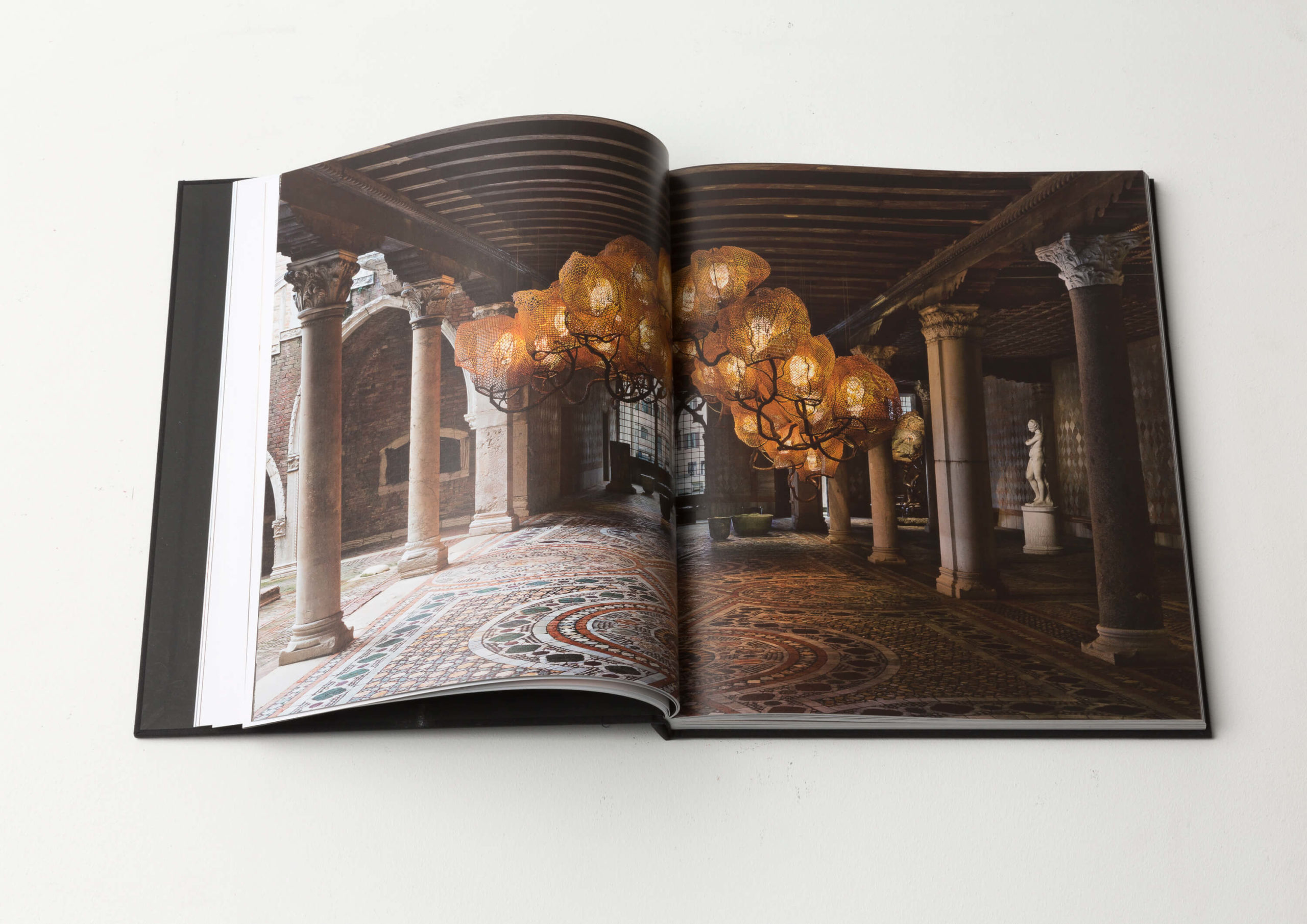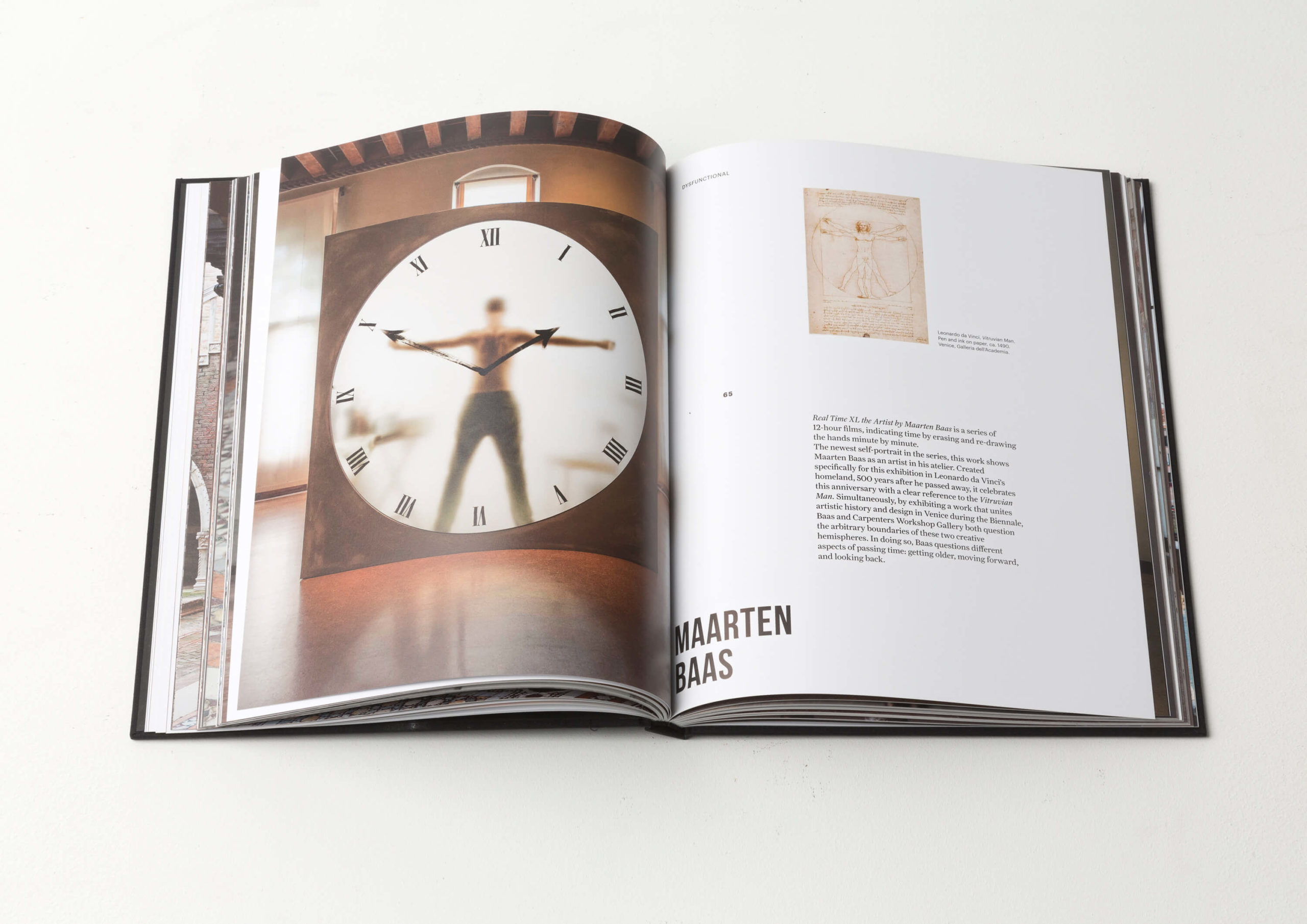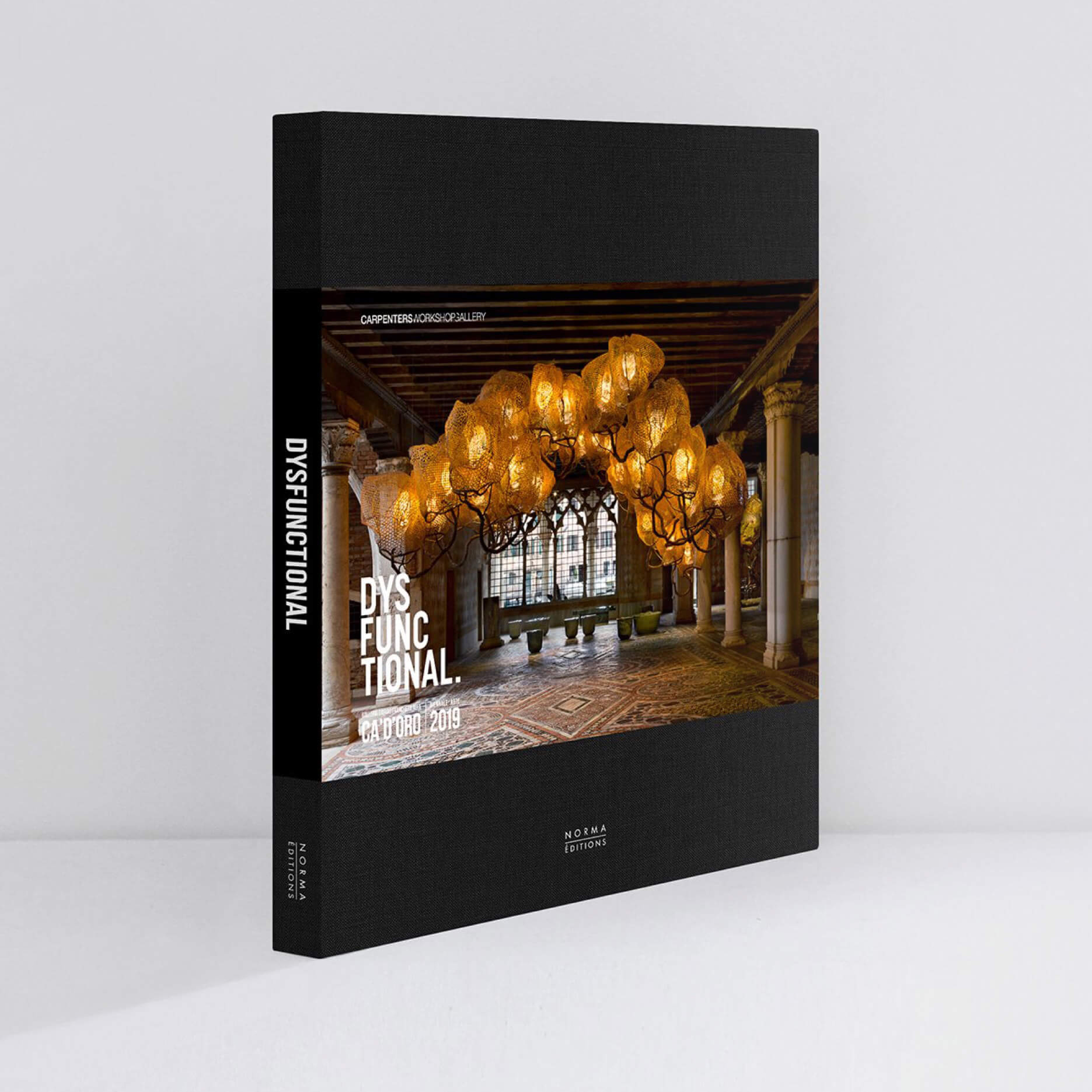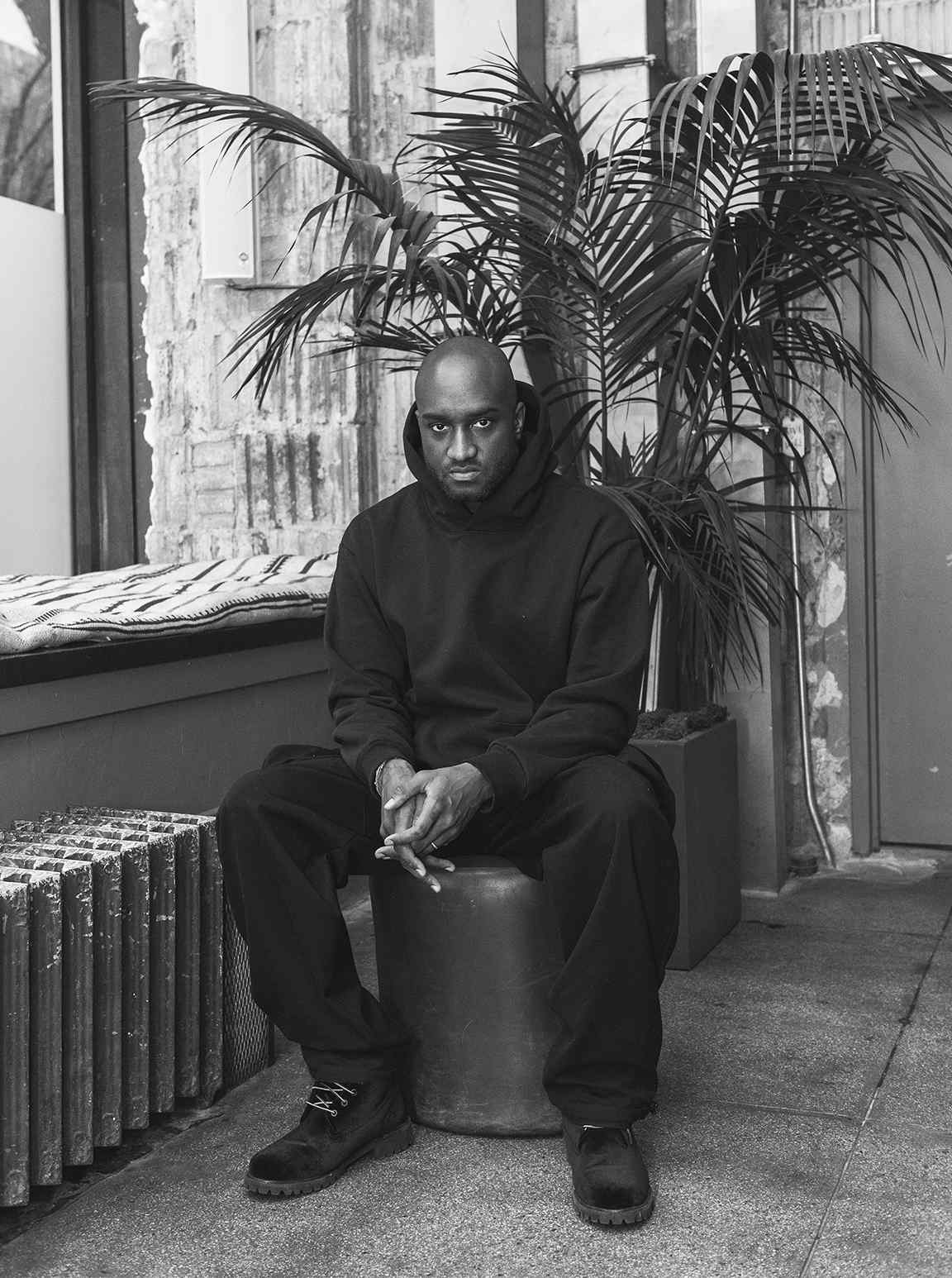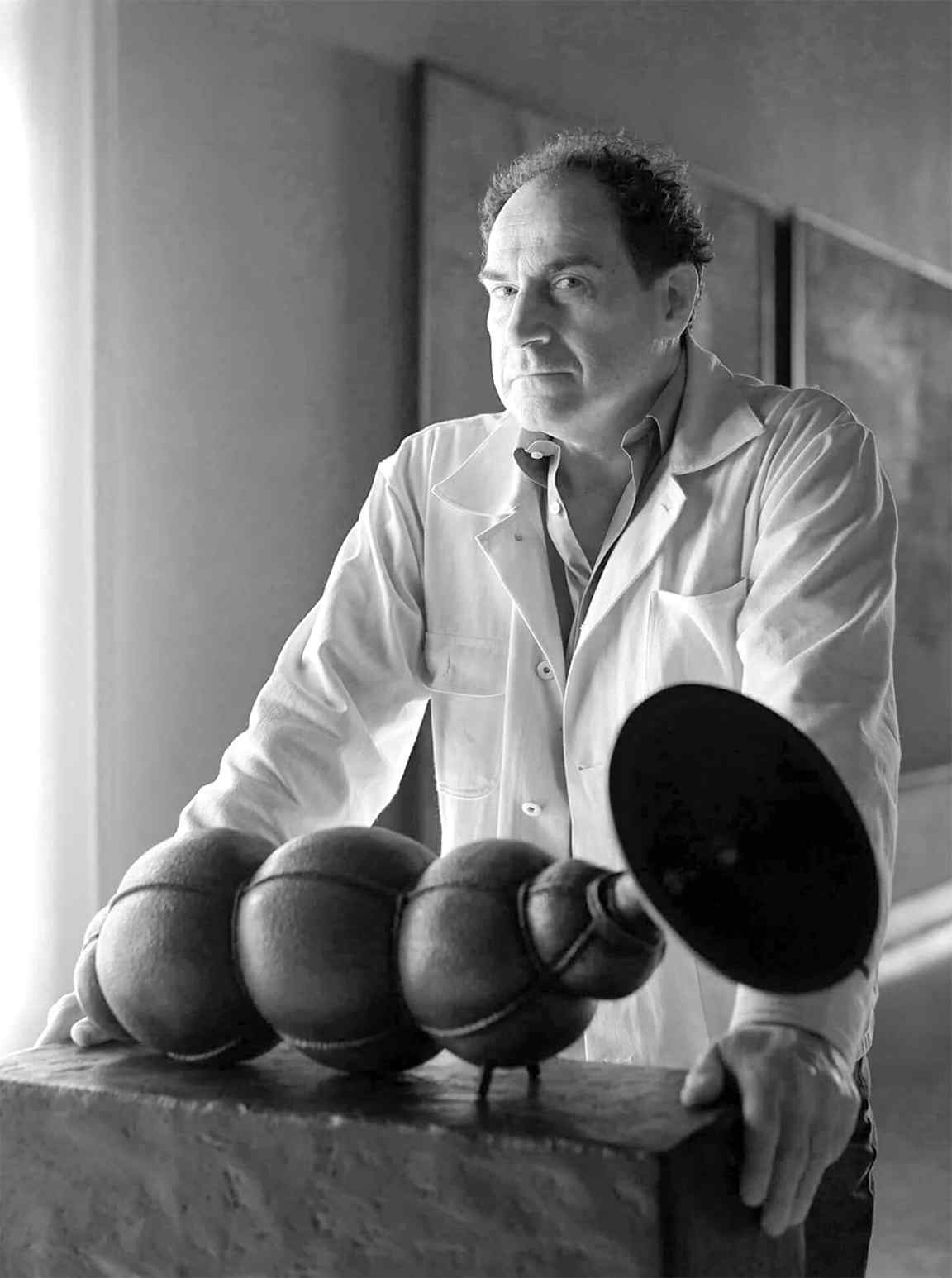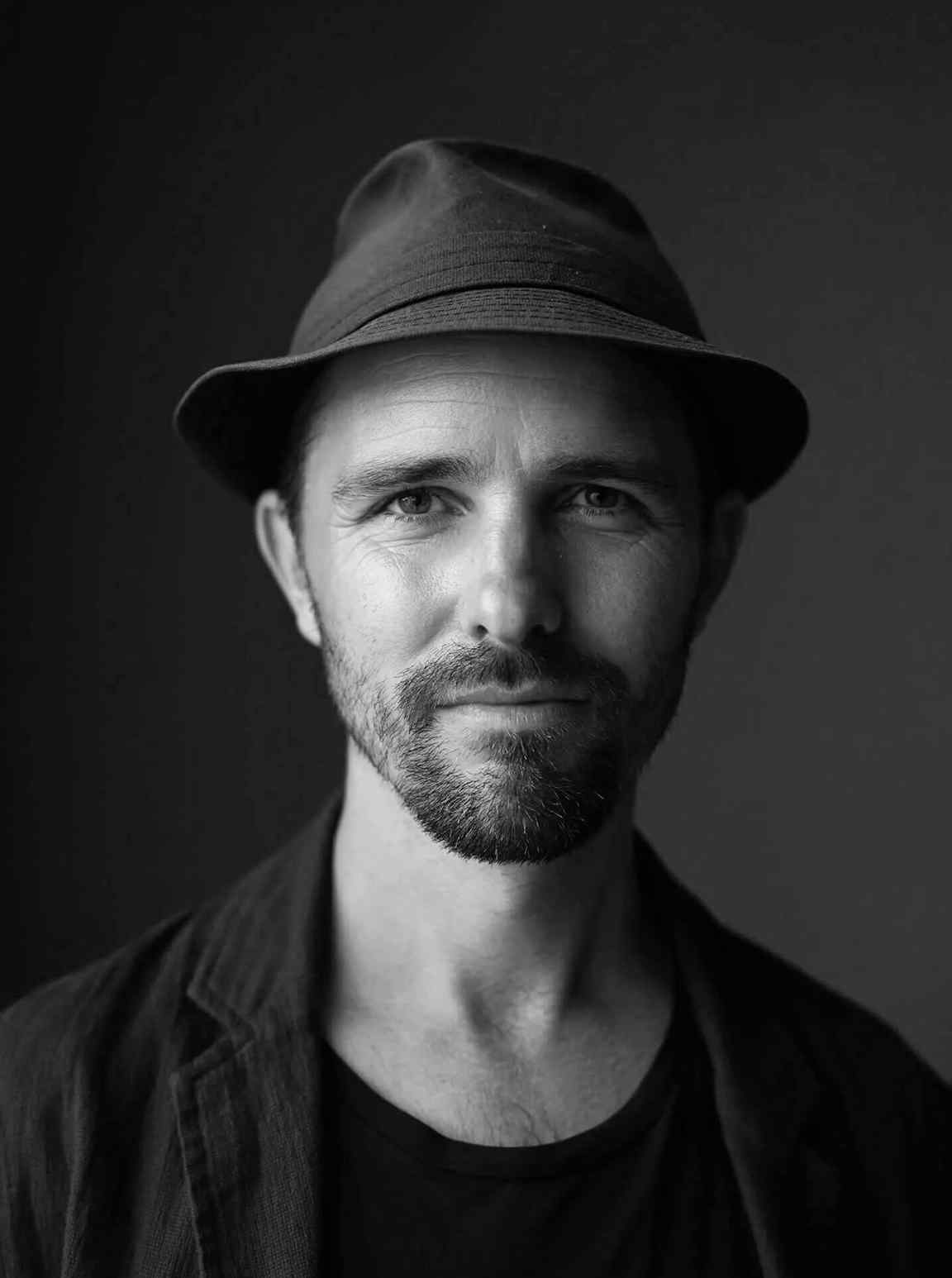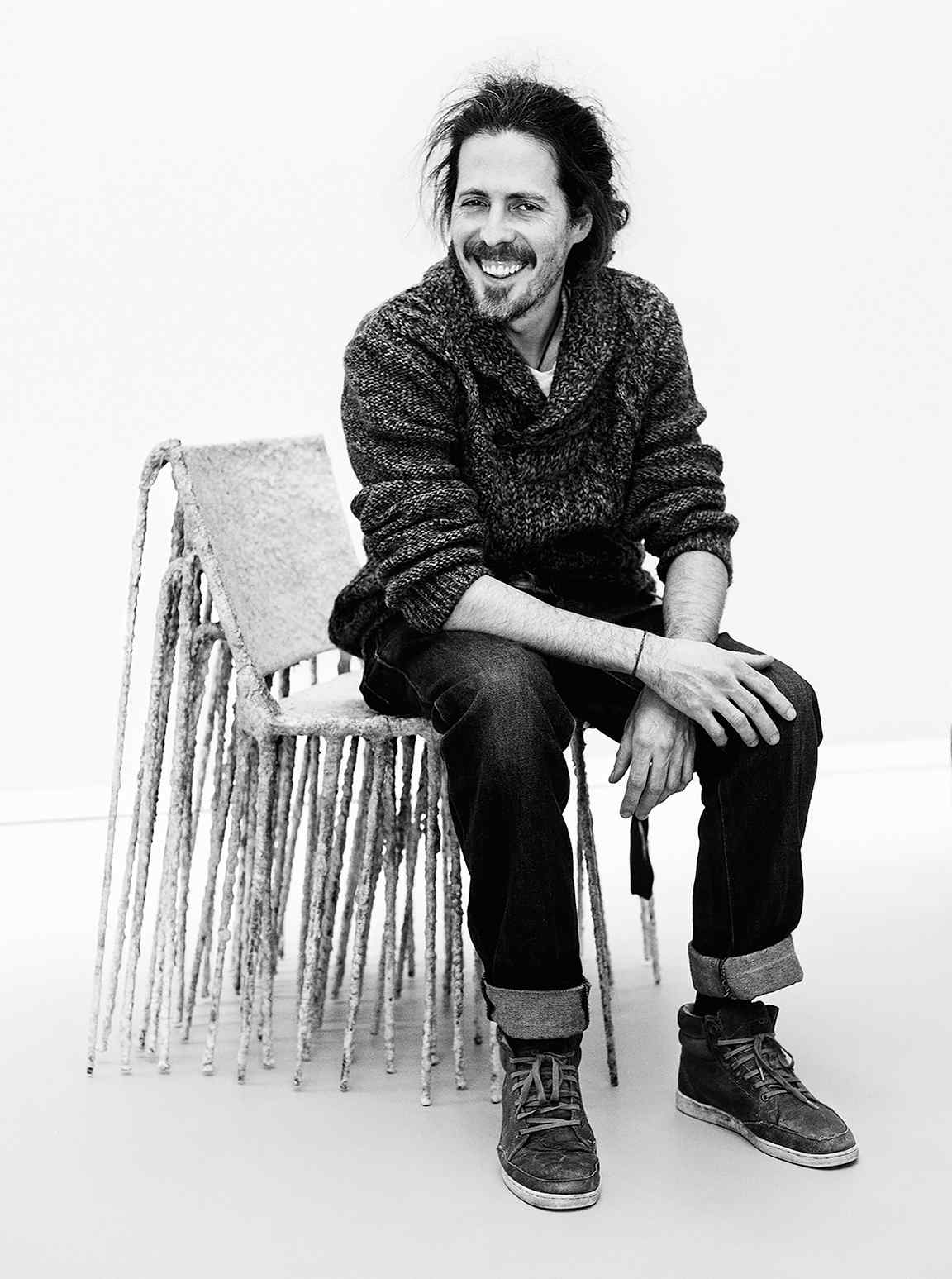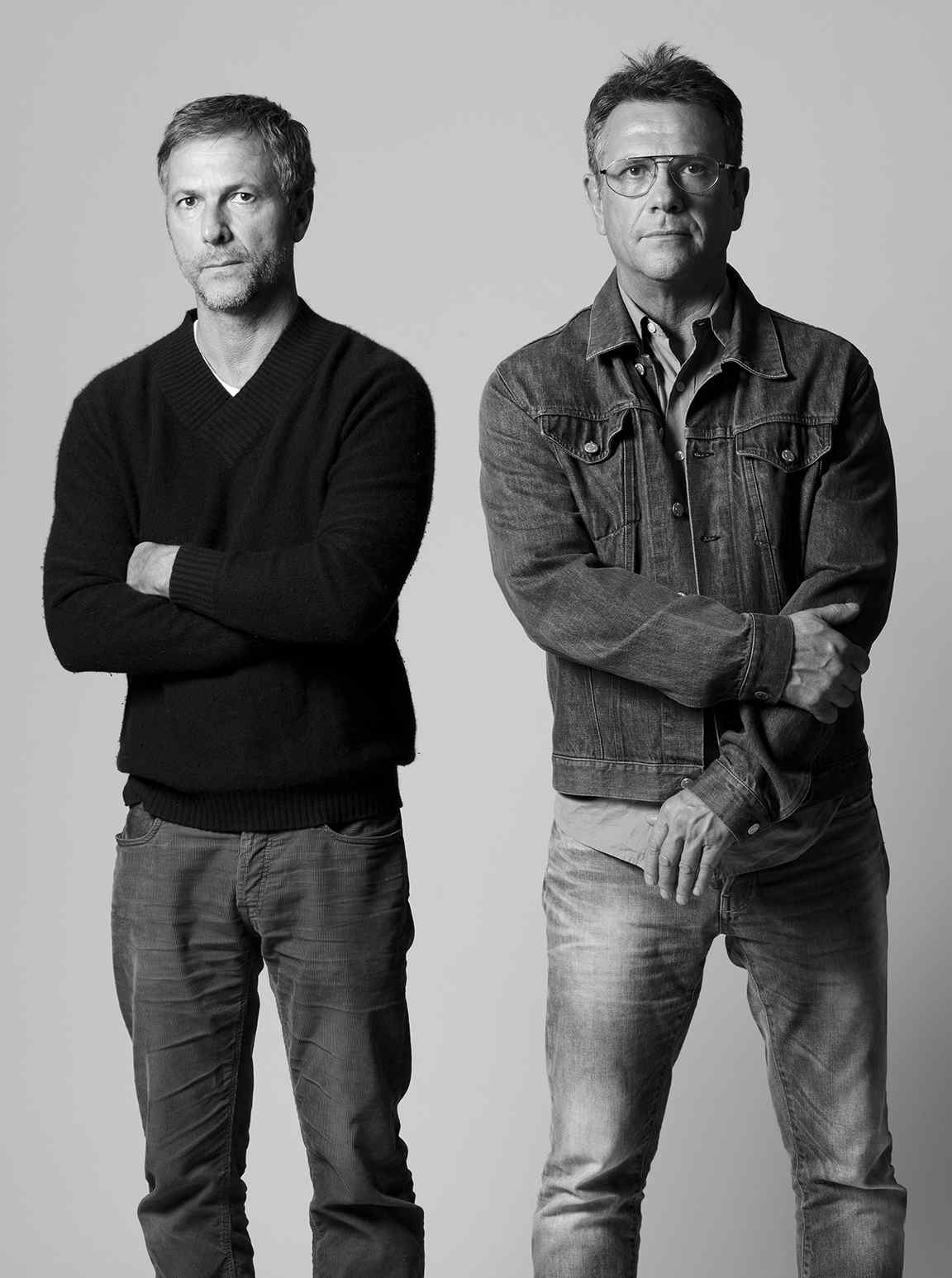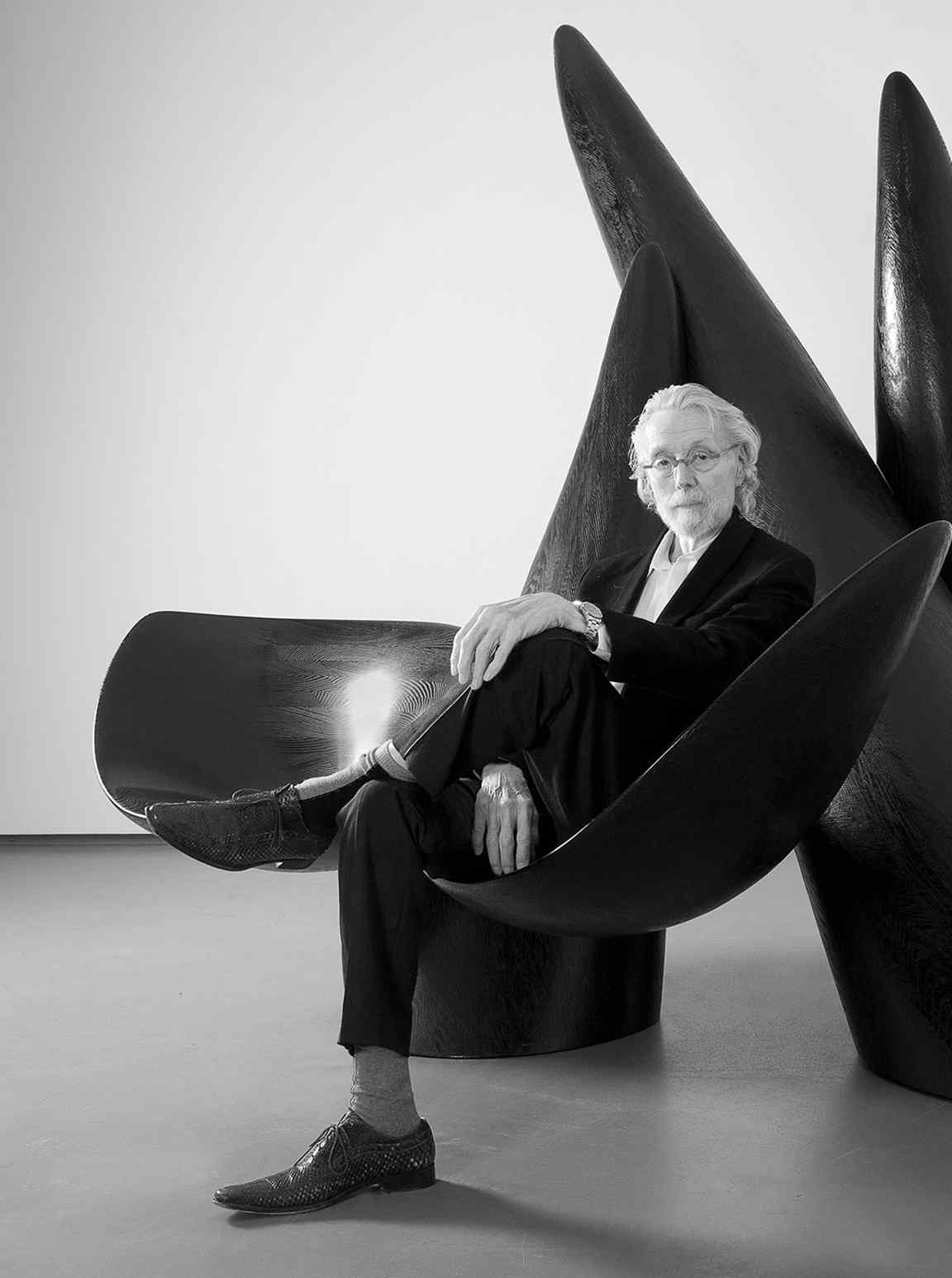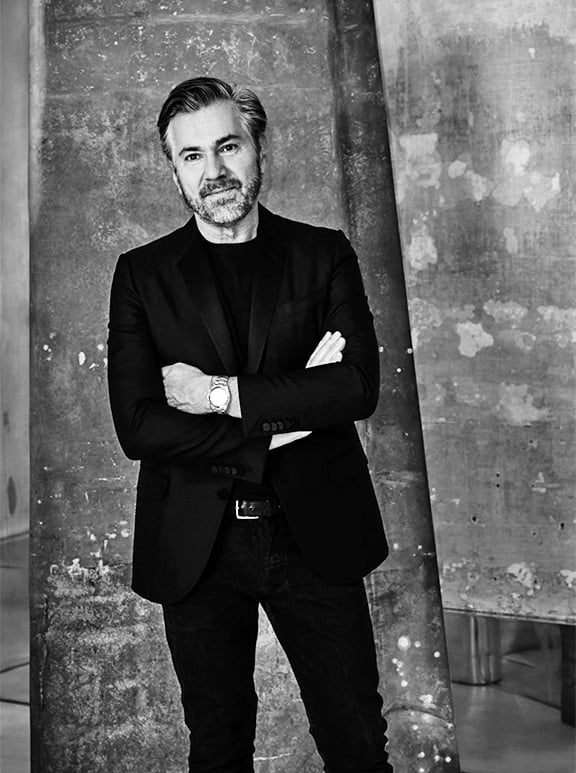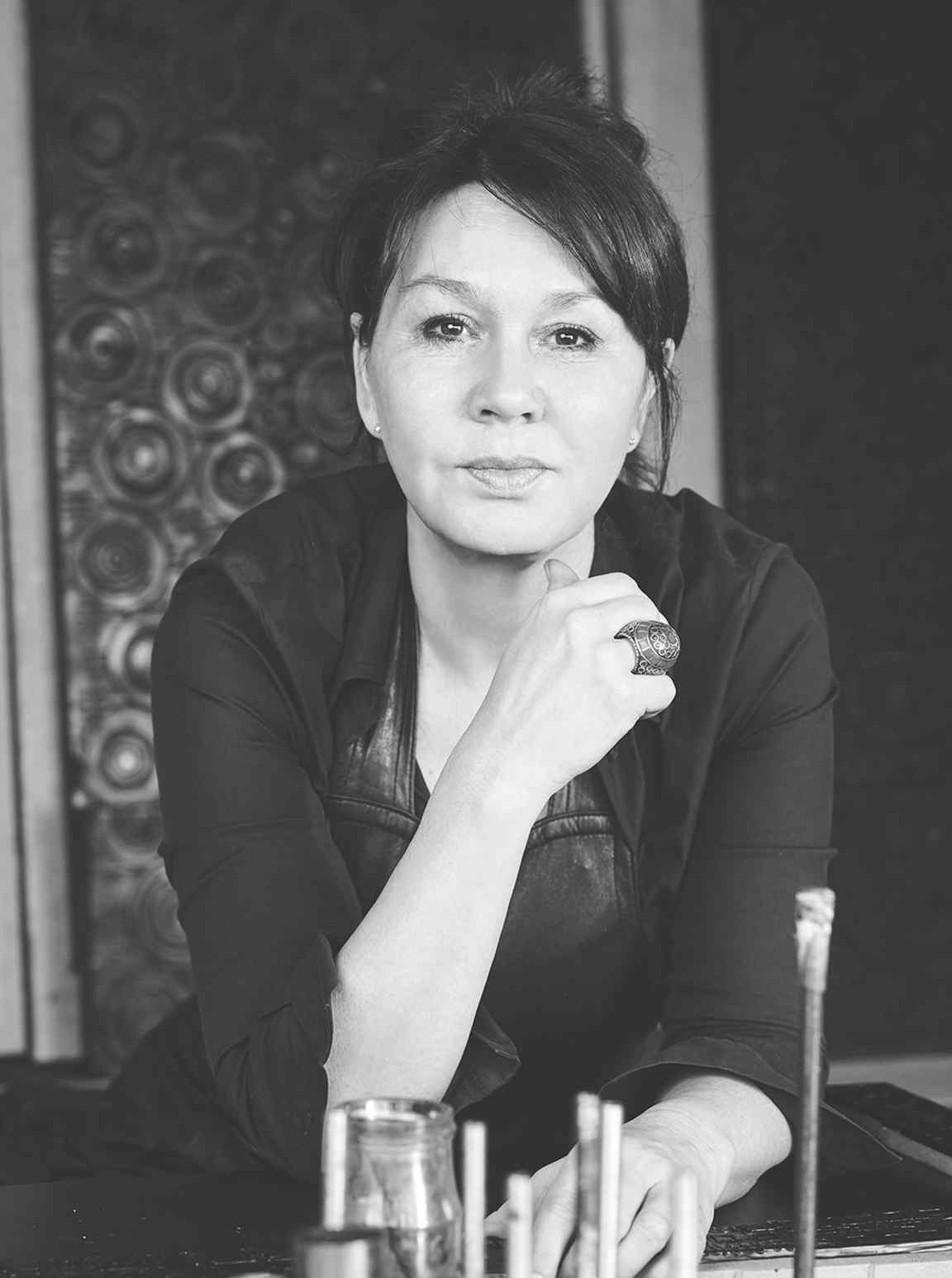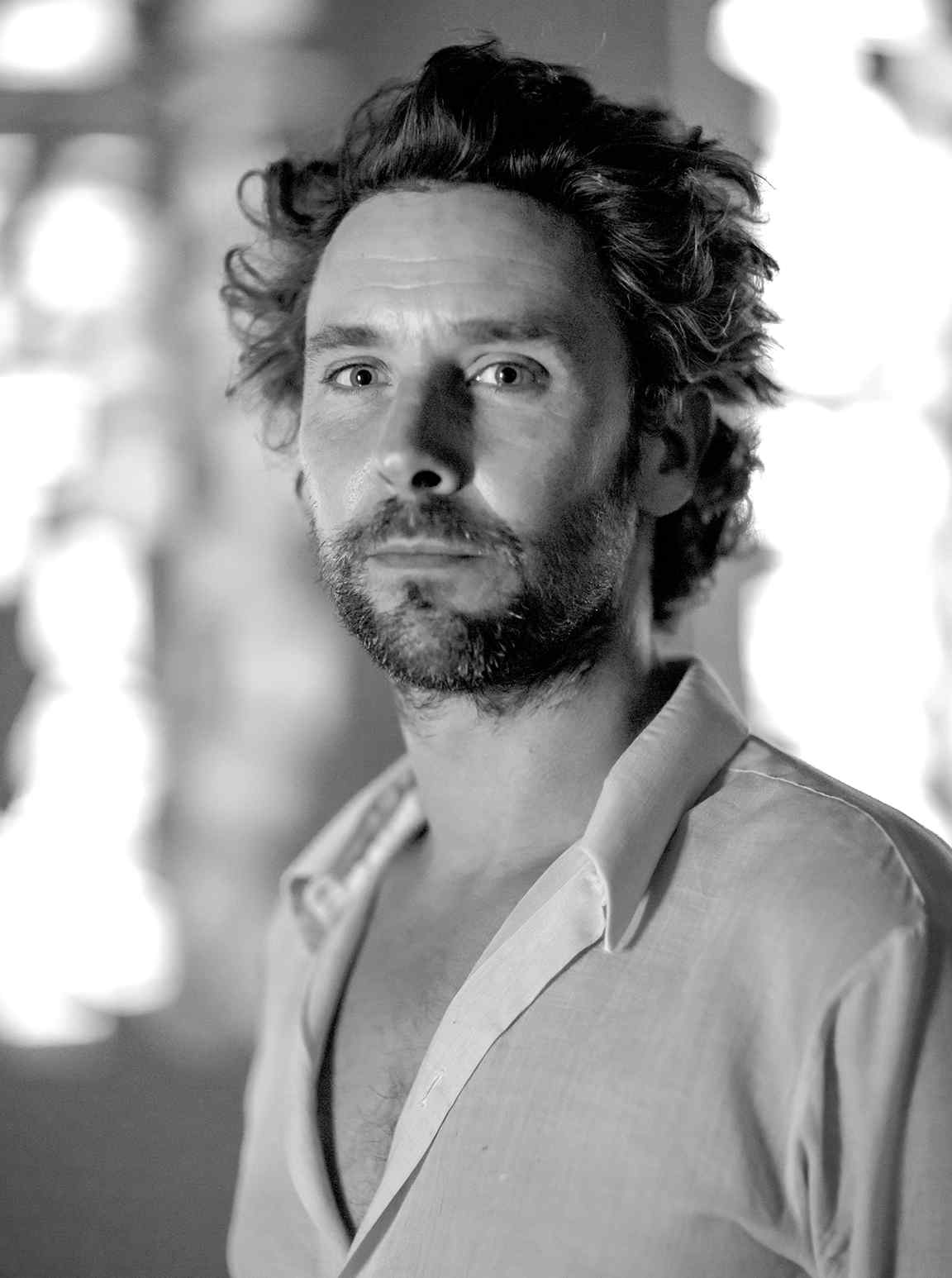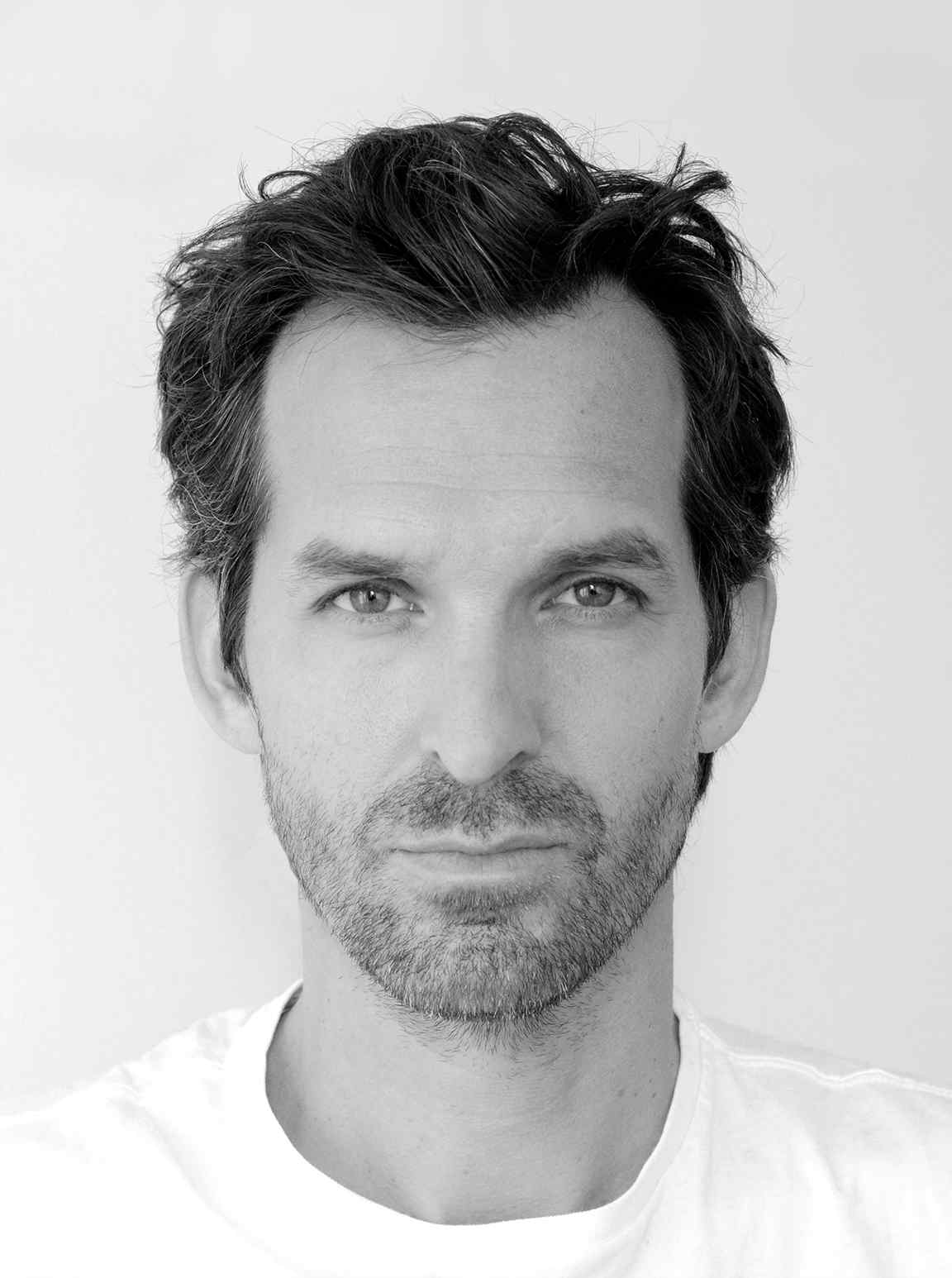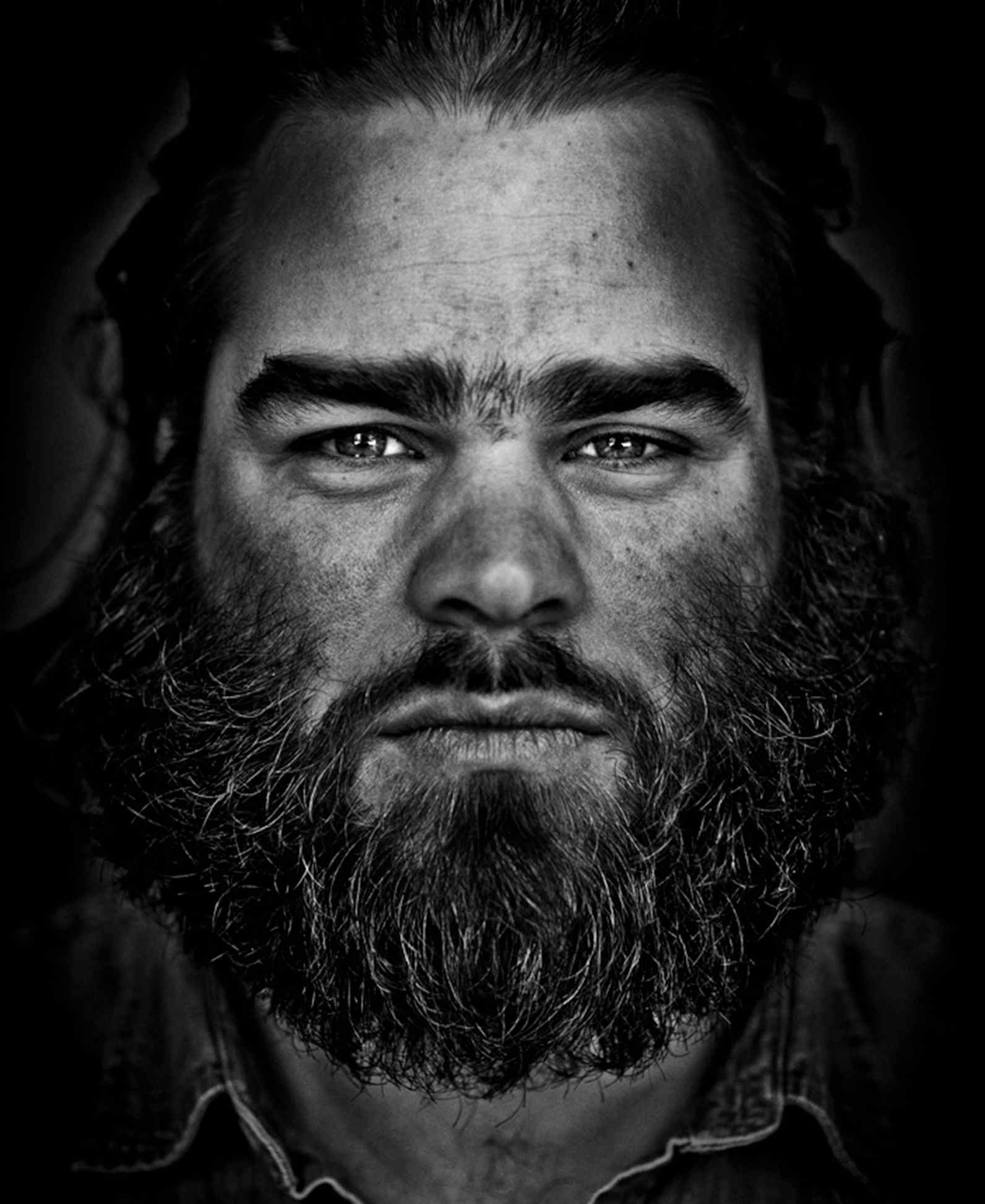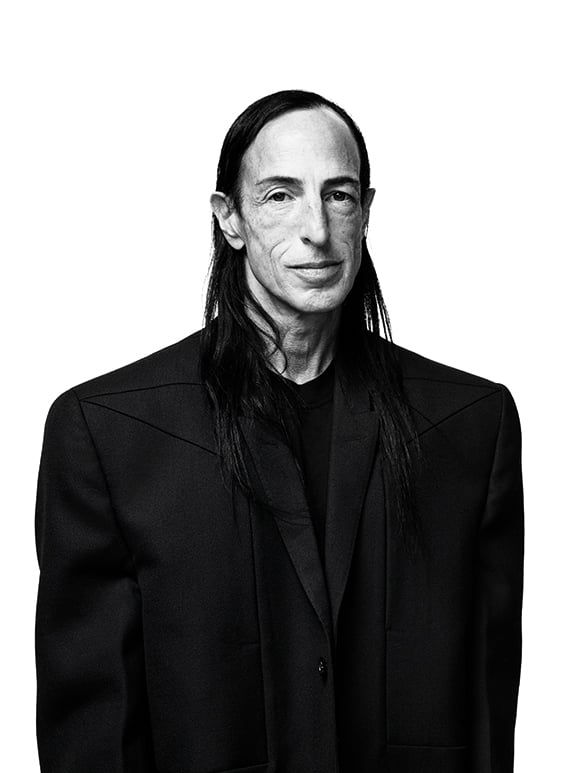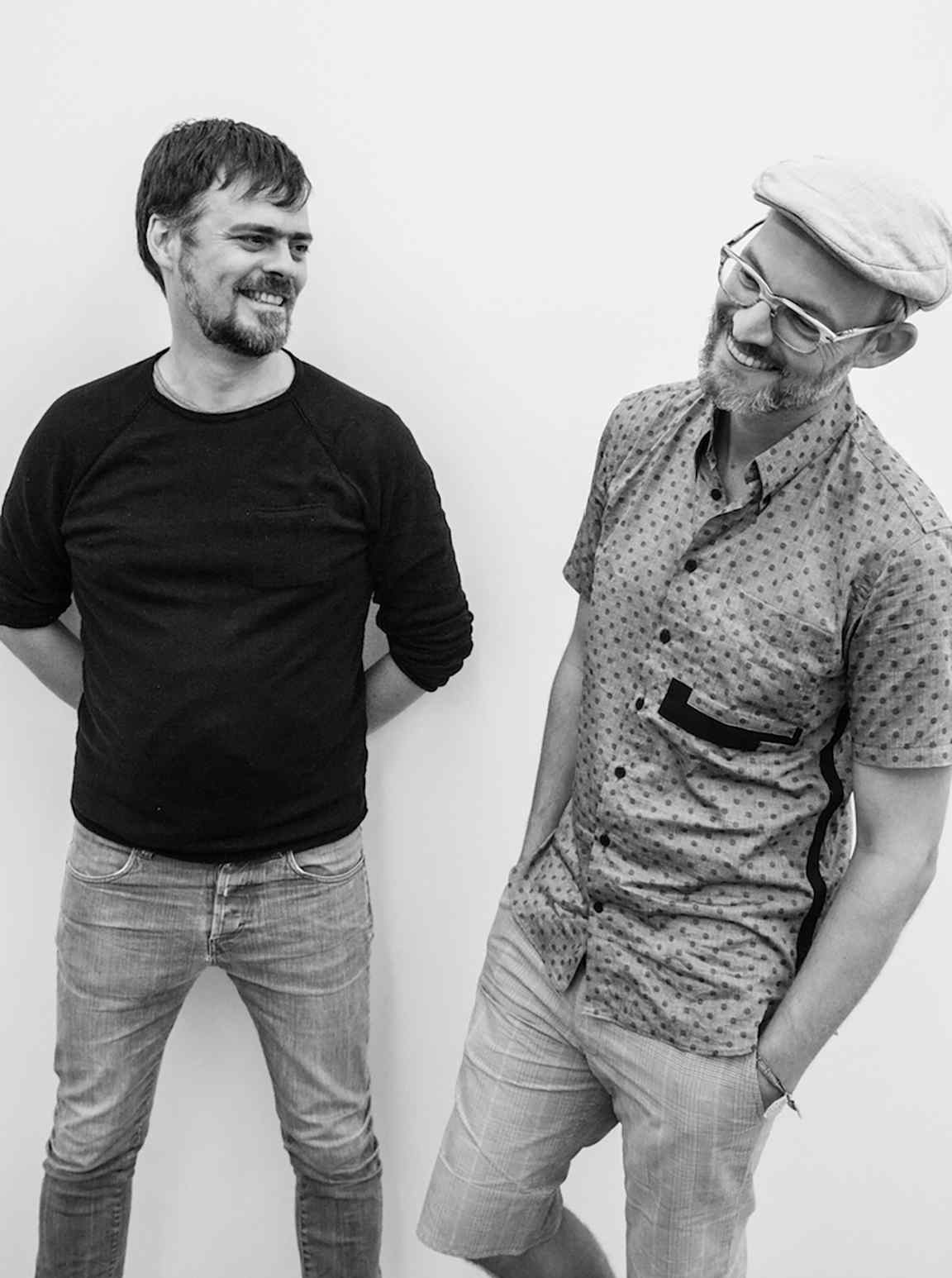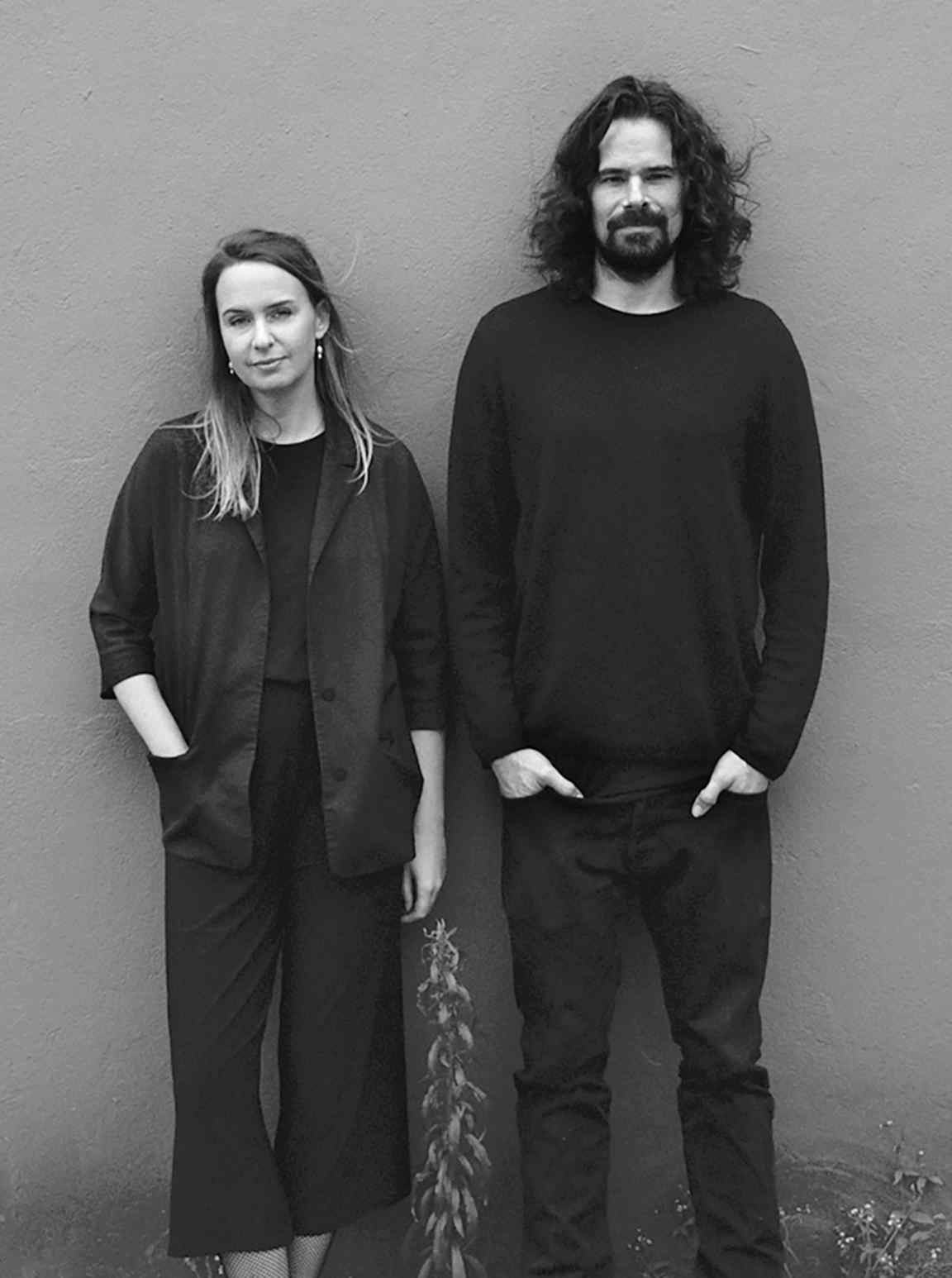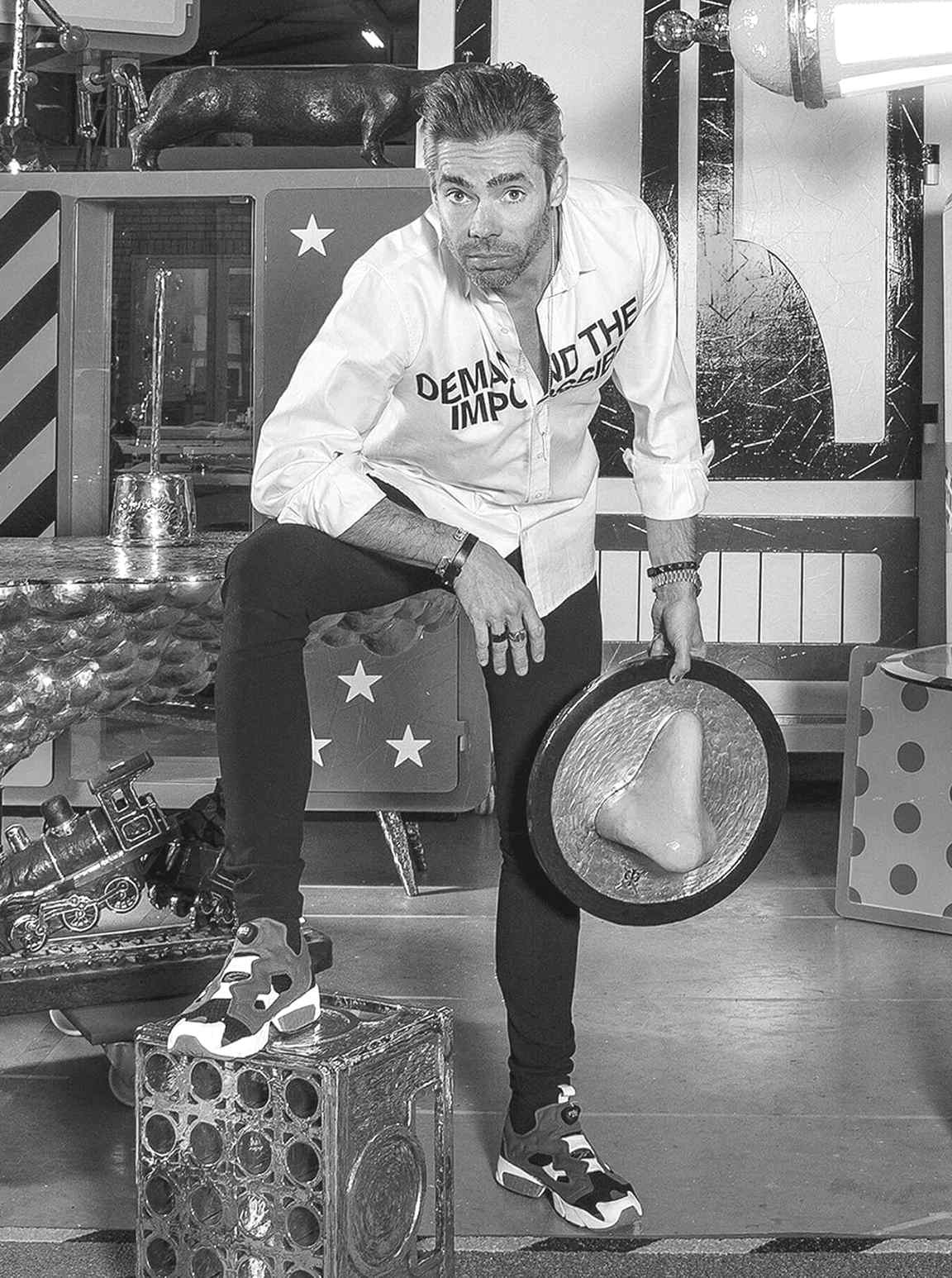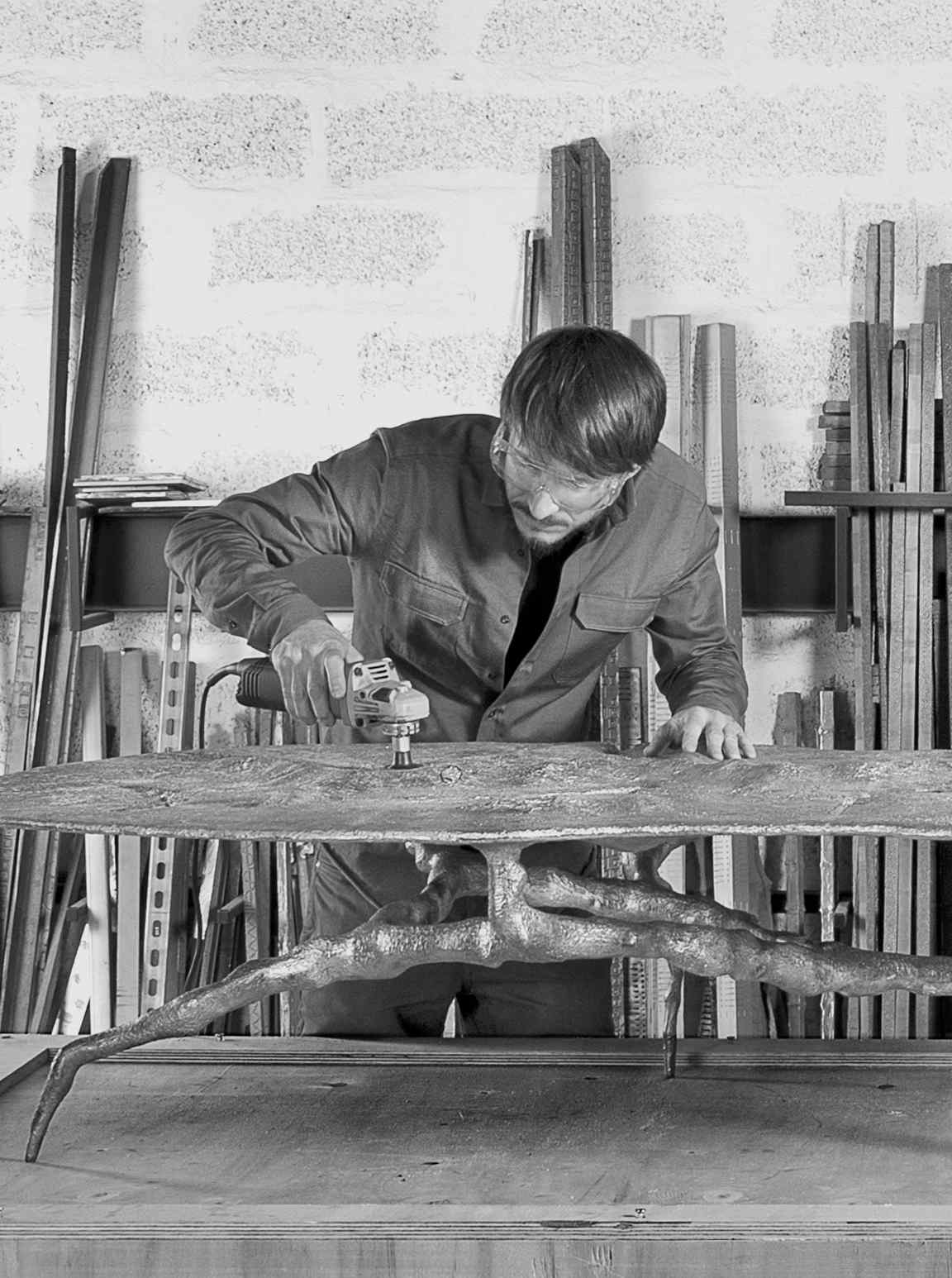Rick Owens grew up in Porterville, a small town in California’s San Joaquin valley.
Drawn to pre-gentrified Hollywood and L.A.’s punk underground in the 80s, Owens studied painting at what is now Otis College of Art and Design. He then switched to Los Angeles Trade Technical-College to learn patternmaking and draping.
Owens launched his eponymous line in 1994, operating out of a raw storefront off Hollywood Boulevard. Photographer Corinne Day shot Kate Moss in his clothing for Carine Roitfeld’s Vogue Paris, which caught the attention of Anna Wintour. Consequently, American Vogue underwrote his first runway show, in New York, and the legendary French fur label Revillon hired him to modernise their centuries-old house. Owens also launched menswear in 2002, which he continues to show bi-annually at Paris men’s fashion week.
Owens moved to Paris with his wife and partner, Michèle Lamy, in 2003, setting up his home and atelier inside a historic five-storey building that previously served as offices for former French president François Mitterrand. His runway collections have been mounted in Paris since then.
Owens founded Owenscorp in France in 2004, making the label completely independently owned.
Diffusion collections that complement the original label for women and men include RICKOWENSLILIES and DRKSHDW. In addition to being carried in specialty boutiques worldwide, the first Rick Owens flagship opened in the Palais Royal of Paris in 2006 and additional stand-alone stores have followed globally. An e-commerce store was launched in 2013.
In July of 2005 he introduced a furniture collection. Using raw plywood, marble, and moose antlers, the collection is inspired by his favourite shapes from Eileen Gray to Brâncuși to California skateparks. The furniture collection has since been shown at the Musée d’art Moderne and Le Centre Pompidou in Paris, and the Museum of Contemporary Art, Los Angeles.
In 2002, the Council of Fashion Designers of America (CFDA) honoured Owens with the Perry Ellis award for emerging talent. He was awarded the Cooper-Hewitt National Design Award for Fashion Design in 2007, as well as The Rule Breakers Award from the Fashion Group International. In 2017, he received the CFDA Lifetime Achievement Award. Owens was named Menswear Designer of the Year at the CFDA fashion awards 2019, in addition to receiving the Fashion Group International Superstar Award later that same year. in 2021, Owens was awarded the WWD Honours Award for Womenswear Designer of the Year.
Owens has authored 6 books — L’ai-je bien descendu? (2007), Rick Owens (2011), Rick Owens: Furniture (2017), a limited edition box set titled Subhuman Inhuman Superhuman (2017), as well as Rick Owens photographed by Danielle Levitt and Legaspi by Rick Owens, both released in September 2019 by Rizzoli.
December 2017 saw the opening of a retrospective exhibition dedicated to Owens’ work at La Triennale di Milano.
In 2019, Owens designed the costumes and makeup for Hiroshi Sugimoto’s production of At the Hawks Well, presented at Opéra Garnier in Paris.






